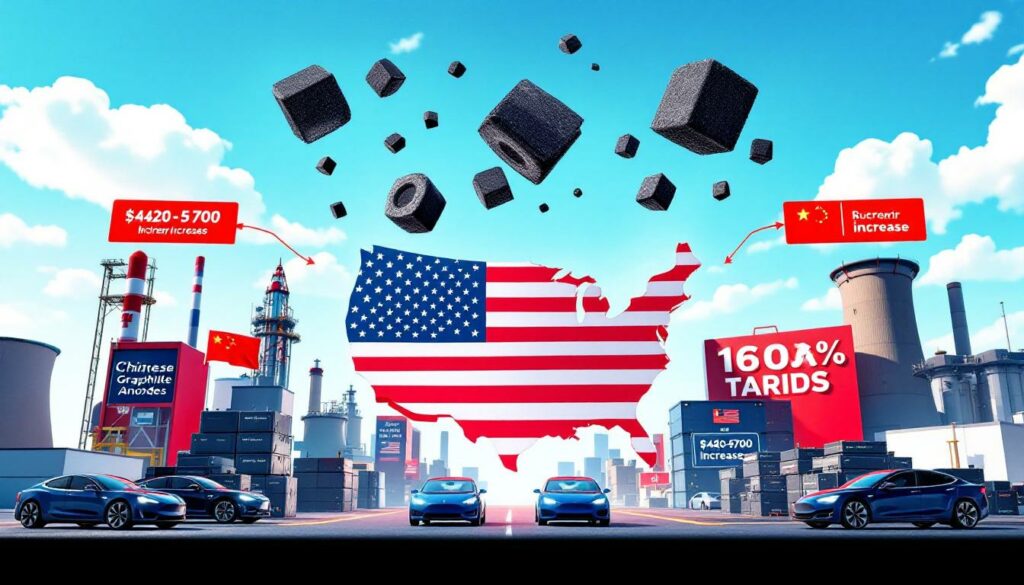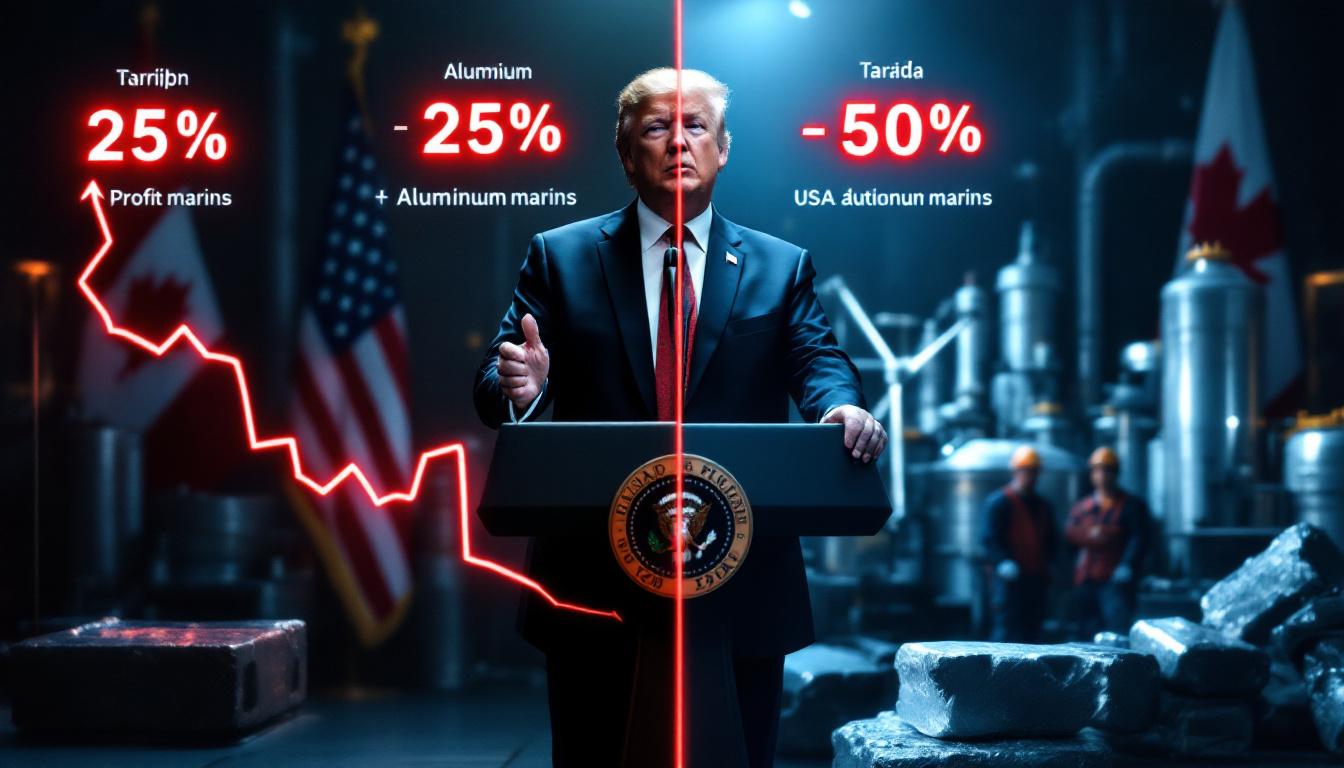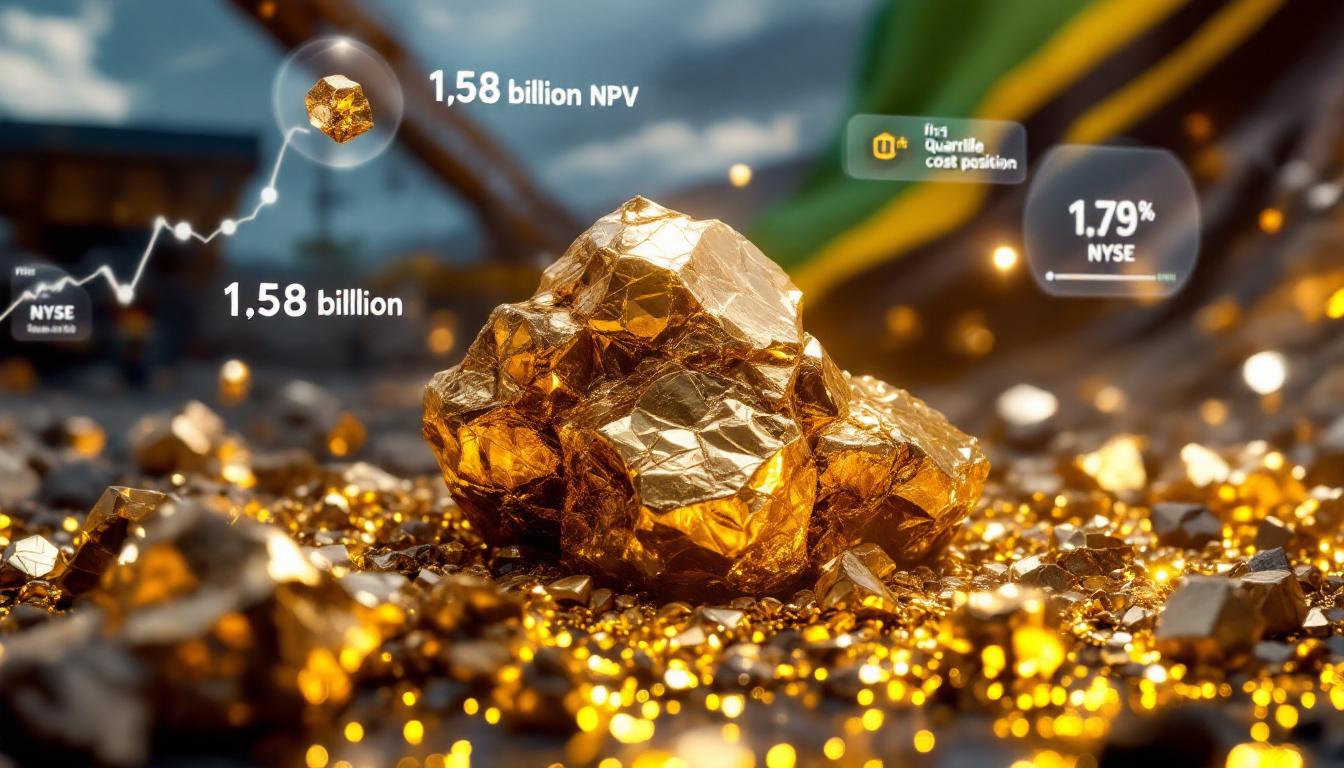What Are the New US Tariffs on Chinese Anode Graphite?
The US Department of Commerce has implemented provisional anti-dumping duties of 93.5% on Chinese anode graphite imports, citing unfair subsidization practices. This decision, announced in July 2025, marks a significant shift in US trade policy toward critical battery materials and represents one of the most substantial tariffs global market impact in the battery supply chain sector.
The duties apply uniformly across all Chinese manufacturers, regardless of their individual pricing practices or market position. According to Commerce Department documentation, these measures are designed to counter what officials determined to be systematic underpricing of strategic battery materials in the American market.
Understanding the Scale of the New Anti-Dumping Duties
When combined with existing tariffs, the effective rate for Chinese graphite importers will reach approximately 160% – a figure that battery industry analysts describe as potentially transformative for US supply chains. The Commerce Department's fact sheet confirms these duties apply to all anode graphite with a minimum carbon purity of 90% by weight, encompassing virtually all battery-grade material.
The provisional nature of these duties means they take effect immediately while the Commerce Department completes its investigation. The final determination is scheduled for December 5, 2025, though industry experts note that provisional duties typically indicate the direction of final rulings.
Financial Impact on Battery Production Costs
According to analysis from CRU Group, these tariffs will add approximately $7 per kilowatt-hour to the manufacturing cost of average EV battery cells. This translates to significant per-vehicle increases:
- $420 additional cost for standard 60 kWh battery packs
- $700 additional cost for premium 100 kWh battery packs found in longer-range models
- Equivalent to approximately 20% of the battery manufacturing tax credits provided under the Inflation Reduction Act
Battery industry experts note that these costs will likely either be absorbed by manufacturers (reducing profit margins) or passed to consumers (increasing vehicle prices) during a critical phase of EV market development.
Why Has the US Imposed These Graphite Tariffs?
The decision to impose substantial duties on Chinese graphite imports follows a formal complaint filed by domestic producers seeking protection against what they characterize as unfair competition. The Commerce Department's preliminary investigation determined that Chinese graphite is being sold in the US market below "fair market value," enabling the provisional duties under US trade law.
American Graphite Producers Behind the Petition
The complaint was filed by American Active Anode Material Producers, a trade group representing emerging domestic graphite manufacturers including:
- Syrah Technologies (Louisiana)
- Novonix (Tennessee)
- Epsilon Advanced Materials (North Carolina)
- Anovion (New York)
- SKI US (Georgia)
These companies have invested significantly in developing US-based graphite processing capabilities, but currently operate at a fraction of the capacity needed to meet domestic demand. Their petition argued that Chinese pricing practices were preventing sustainable growth of US manufacturing capacity.
US Government's Strategic Rationale
Beyond addressing specific pricing concerns, the Commerce Department's decision aligns with broader strategic objectives:
- Reducing dependency on Chinese battery materials, which currently dominate global supply chains
- Strengthening domestic supply chain resilience for critical battery components
- Supporting the growth of US battery manufacturing capacity
- Aligning with national security priorities regarding critical minerals policies
The Commerce Department emphasized that the final determination will follow a comprehensive review process, with the December 5, 2025 deadline allowing for additional industry input and economic impact assessment.
How Will These Tariffs Affect the Battery Industry?
The imposition of 93.5% duties on Chinese anode graphite creates immediate challenges for battery manufacturers operating in or supplying the US market. According to BloombergNEF data, the US imports nearly 180,000 tonnes of graphite products annually, with Chinese sources accounting for approximately two-thirds of this volume.
Immediate Challenges for Battery Manufacturers
Industry analyst Sam Adham of CRU Group notes that these tariffs impact on markets could "wipe out profits for one or two entire quarters" for some battery producers, particularly those with fixed-price supply agreements or who have not secured alternative materials sources.
Key impacts include:
- Margin compression for battery manufacturers with limited pricing power
- Supply chain disruptions while manufacturers secure alternative sources
- Potential production delays at US battery cell manufacturing facilities
- Competitive disadvantage for US-made batteries in global markets
Battery manufacturers with significant Chinese supply dependencies face difficult decisions about absorbing costs, raising prices, or accelerating alternative sourcing strategies.
China's Dominant Position in Graphite Processing
The tariffs highlight China's outsized role in global battery supply chains:
- China processes approximately two-thirds of all graphite used in US battery production
- Of the nearly 180,000 tonnes of graphite products imported to the US annually, Chinese sources account for approximately 120,000 tonnes
- Chinese processors have established quality and consistency advantages through decades of development
- Domestic US graphite industry currently lacks capacity to meet both quality and quantity requirements
This supply chain reality has prompted opposition from some manufacturers, including Tesla, which has publicly stated that domestic US graphite processing lacks sufficient development to meet the quality standards and volume requirements of major battery producers.
What Types of Graphite Are Affected by the New Tariffs?
The Commerce Department has defined a broad scope for materials subject to the new duties, encompassing virtually all graphite suitable for battery anode production. This comprehensive approach reflects the department's determination that unfair pricing practices exist across the Chinese graphite industry rather than in specific market segments.
Scope of Materials Under Tariff
The new duties apply to:
- Natural graphite with minimum 90% carbon purity
- Synthetic graphite with minimum 90% carbon purity
- Blended graphite materials (combinations of natural and synthetic)
- All forms suitable for battery anode production regardless of processing method
Notably, the tariffs make no distinctions between different graphite types or processing methods, applying the same 93.5% rate universally to Chinese producers.
Technical Specifications and Exclusions
The Commerce Department's fact sheet specifies:
- Minimum carbon content threshold of 90% by weight for inclusion
- No exemptions based on particle size, shape, or other physical characteristics
- Exclusion of lower-grade graphite primarily used in refractory applications
- Exclusion of ultra-high-purity graphite used in specialized non-battery applications
Battery manufacturers note that the 90% carbon purity threshold effectively captures all commercially viable battery anode materials while excluding lower-grade industrial graphite.
How Does This Fit Into Global Battery Material Politics?
The graphite tariffs represent the latest development in an increasingly complex global competition for control of battery supply chains. China's dominant position extends beyond graphite to multiple critical minerals in energy, creating strategic concerns for the US and other nations pursuing transportation electrification.
China's Strategic Control of Battery Supply Chains
Beyond controlling approximately two-thirds of US graphite imports, China maintains significant advantages across the battery material ecosystem:
- Dominates global processing capacity for lithium, cobalt, and nickel
- Controls majority of global graphite processing infrastructure
- Maintains leading position in cathode and anode material production
- Leverages vertical integration from mining through cell production
This comprehensive control provides China with significant influence over global EV development and pricing, creating strategic vulnerabilities for other nations' automotive and energy storage industries.
US Strategic Response and Policy Alignment
The graphite tariffs align with broader US policy initiatives designed to reduce dependency on Chinese battery materials:
- Complements domestic manufacturing incentives under the Inflation Reduction Act
- Follows similar protective measures for other battery materials
- Supports the development of domestic graphite processing capacity
- Aligns with broader domestic critical reserves objectives
Industry analysts note that the tariffs effectively operate as a counterbalance to China's strategic advantages, albeit with immediate cost implications for US manufacturers and consumers.
What Are the Arguments Against These Tariffs?
Despite the strategic rationale behind the graphite tariffs, significant opposition exists among some industry stakeholders. These concerns center primarily on short-term supply disruptions, cost increases, and the readiness of domestic alternatives.
Industry Opposition Perspectives
Tesla has emerged as a prominent opponent of the graphite tariffs, arguing that:
- The US graphite industry lacks necessary development to meet quality standards
- Domestic capacity remains insufficient to meet volume requirements
- Tariffs will increase vehicle costs during a critical adoption phase
- Alternative supply chains require years of development and validation
These arguments highlight the tension between long-term strategic objectives and short-term manufacturing realities in the rapidly evolving battery sector.
Economic Considerations and Trade-offs
Critics of the tariffs point to several economic challenges:
- Potential to partially offset battery manufacturing tax credits from the Inflation Reduction Act
- Risk of slowing EV adoption by increasing vehicle costs
- Competitive disadvantage for US manufacturers compared to international markets without similar tariffs
- Short-term supply disruptions while domestic capacity develops
CRU Group analysis suggests the tariff impact is equivalent to approximately 20% of the battery manufacturing tax credits provided under the Inflation Reduction Act, potentially undermining some of the intended benefits of that legislation.
How Will This Affect EV Affordability?
The tariffs' impact on EV pricing represents a significant concern for manufacturers and policymakers focused on accelerating electric vehicle adoption. While battery costs have declined substantially over the past decade, the duties threaten to temporarily reverse this trend for US-made vehicles.
Consumer Cost Impact
Based on CRU Group's analysis of $7 per kilowatt-hour in additional costs:
- $420-700 additional cost per vehicle depending on battery size
- Approximately 1-2% increase in total EV price for mid-range vehicles
- Potentially larger percentage impact on entry-level EV models where price sensitivity is highest
- Disproportionate effect on price-sensitive market segments and first-time EV buyers
These cost increases come at a critical juncture for EV adoption, as manufacturers attempt to reach price parity with conventional vehicles in mainstream market segments.
Manufacturer Response Strategies
Vehicle and battery manufacturers have several potential responses to mitigate tariff impacts:
- Absorption of some costs to maintain competitive pricing in key segments
- Acceleration of efforts to develop alternative supply chains
- Increased investment in domestic graphite processing capabilities
- Exploration of alternative anode technologies less dependent on graphite
Industry analysts expect varied responses based on manufacturers' market positioning, with premium brands likely absorbing costs while mass-market manufacturers may need to adjust pricing or specifications.
What Are the Alternatives to Chinese Graphite?
The search for viable alternatives to Chinese graphite has accelerated in recent years, though significant challenges remain in matching China's combination of scale, cost, and quality. Both domestic and international alternatives face substantial development timelines before reaching competitive parity.
Emerging Domestic Production Capabilities
Several US companies are developing graphite processing facilities, including:
- Syrah Technologies (Louisiana) – Expanding natural graphite processing
- Novonix (Tennessee) – Synthetic graphite production
- Epsilon Advanced Materials (North Carolina) – Integrated anode material production
- Anovion (New York) – Synthetic and blended graphite materials
- SKI US (Georgia) – Integrated battery material production
However, industry analysts note that current domestic capacity remains significantly below market demand, with quality and consistency challenges typical during production scale-up phases.
International Non-Chinese Alternatives
Several non-Chinese graphite sources are being developed, including:
- Australia – Natural graphite deposits with processing development
- Brazil – Established natural graphite mining with expanding processing
- Mozambique – Large-scale natural graphite resources (Syrah Resources' Balama operation)
- Madagascar – High-quality flake graphite deposits
These alternative sources typically face higher cost structures than Chinese competitors and require significant investment in processing infrastructure to meet battery-grade specifications.
What's Next for the Graphite Market?
The graphite market faces a period of significant adjustment following the imposition of US tariffs. Both supply chains and pricing structures will likely undergo substantial evolution as manufacturers adapt to the new trade environment.
Timeline for Implementation and Adjustment
Key upcoming milestones include:
- Provisional duties effective immediately as of July 2025
- Final determination scheduled for December 5, 2025
- Potential adjustments to duty rates following the review period
- Implementation strategies and compliance requirements for affected importers
Industry analysts expect a period of price volatility and supply uncertainty while manufacturers develop alternative sourcing strategies and the market establishes new equilibrium pricing.
Market Adaptation Strategies
Battery and automotive manufacturers are likely to pursue multiple parallel strategies:
- Accelerated development of domestic graphite processing capacity
- Exploration of silicon and other alternative anode materials to reduce graphite dependency
- Battery design modifications to optimize for different graphite sources
- Supply chain diversification beyond Chinese sources
These adaptation efforts will play out over different timeframes, with immediate price adjustments followed by medium-term supply chain modifications and longer-term technology evolution.
FAQ: US Tariffs on Chinese Anode Graphite
When will these tariffs take full effect?
While the provisional duties are effective immediately as of July 2025, the final determination is scheduled for December 5, 2025. At that point, the Commerce Department may adjust the rates or implementation strategy based on its completed investigation.
Will these tariffs affect all types of graphite imports?
The tariffs specifically target anode graphite with a minimum purity of 90% carbon by weight, regardless of whether it's natural, synthetic, or a blend of both types. This threshold effectively captures all battery-grade material while excluding lower-grade industrial graphite.
How much will these tariffs increase the cost of electric vehicles?
Based on CRU Group's analysis, the tariffs will add approximately $7 per kilowatt-hour to battery costs, translating to $420 for a typical 60kWh battery and $700 for a premium 100kWh battery pack. This represents approximately 1-2% of total vehicle cost for most models.
Are there any exemptions for certain manufacturers or importers?
No exemptions are currently planned. The Commerce Department has indicated the same 93.5% rate will apply uniformly to all Chinese manufacturers, regardless of their individual pricing practices or market position.
How does this affect the Inflation Reduction Act incentives?
According to CRU Group analysis, the tariff impact is equivalent to approximately 20% of the battery manufacturing tax credits provided under the Inflation Reduction Act. This partial offset could complicate the economics of domestic battery manufacturing for some producers.
Interested in Spotting the Next Major Mineral Discovery?
Discovery Alert's proprietary Discovery IQ model delivers real-time notifications on significant ASX mineral discoveries, empowering investors to identify actionable opportunities ahead of the broader market. Explore our dedicated discoveries page to understand how historic mineral discoveries have generated substantial returns for early investors.




